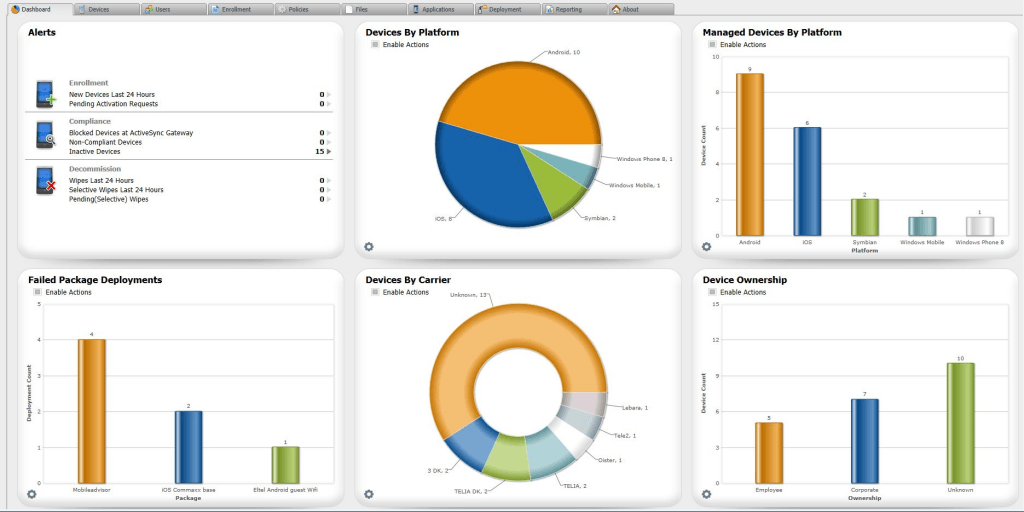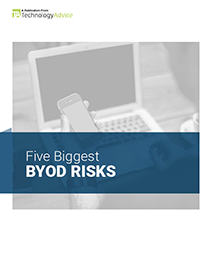When Bring Your Own Device (BYOD) was making a dramatic entrance with enterprises a few years ago, Mobile Device Management (MDM) seemed an effective counterbalance to the security concerns posed by the influx of new devices. But just a few short years later, it’s clear that MDM alone isn’t enough to address all the concerns in an enterprise mobility program.
In response, the market has moved to a new acronym du jour, Enterprise Mobility Management (EMM).
New Acronym, New Capabilities
So what happened to MDM? This software is still critical to enterprise mobility, but when IT admins began integrating MDM into their BYOD policy, they found the software had limitations both in functionality and user experience.
The limitations of MDM are most apparent when employees own the device, but use it for work purposes. Because MDM operates at the device level, if an admin wants to destroy some of the data in an application that the employee uses both professionally and personally — Dropbox is a common example — all of the information must go.
Naturally, this is a problem from the employee’s perspective and a limitation in functionality for the software. So MDM essentially reached its limits when employees’ expectations graduated from just using their devices on the company network to accessing work-related apps and proprietary information without ceding control of their personal information and data.
At the same time, the base functions of MDM were starting to become more common outside of software vendors. Way back in 2013, Apple included MDM functions such as single-sign on and per app VPNs in iOS 7, though these settings were essentially impossible to scale because they required physical access to the device.
In another example, Microsoft announced built-in MDM for commercial Office 365:
Over the past several years, the functions of MDM have become commoditized and the extend of the software’s capabilities to meet the complex needs of enterprise mobility has been exposed. At its conclusion, the Microsoft video hints that certain organizations may need more than MDM, which is to say that they may need to manage mobility at more than a device level.
This concession underscores the critical shift in the market: Businesses began to understand that they needed to manage the information on employees’ devices rather than solely fortifying the devices themselves. Thus, Enterprise Mobility Management entered the scene.
EMM is About Flexibility
Where MDM limited admins to managing at a device level, EMM solutions expand the capabilities of IT to set up policies on an application and information level. And because it wouldn’t be business software if there weren’t an acronymed accompanying every single software feature, the terms describing EMM features are best divided into these categories:
- Mobile Application Management (MAM)
- management of devices from application level, like putting a wrapper around an app or configuring how applications access information, both from the business network and from other apps on the device
- Mobile Identity Management (MIM)
- functions like role-based access that apply context such as geo-fencing to determine not only who’s using the device, but also where they’re using it from
- Mobile Content Management (MCM)
- oversight and control at a content level, which can include copy and paste restriction and access to business content repositories like Sharepoint
Along with MDM, these three categories help articulate the broad reach of EMM for managing mobility. However, this multi-layered approach isn’t a concession to additional complexity, but rather a method for centralizing the management of mobile devices for IT admins.
As Gartner states in their 2015 EMM Magic Quadrant: “…EMM provides the opportunity to avoid agent bloat, which is so often seen on PCs, where an endless parade of add-on utilities steal local resources, duplicate, and complicate the task policy coordination for the system administrators.”
Citrix’s new dashboard for XenMobile 10 platform highlights the potential of EMM to simplify an admin’s user experience rather than complicate it — one of the main concerns when developing an enterprise mobility program, not to mention choosing software.

Citrix XenMobile tries to make EMM palatable
When used properly, an enterprise mobility management solution should supply both the technical capabilities to secure proprietary data as well as a pleasant user experience for both the system administrator and the employee using the device.
How to Choose From All Those Features
Choosing a solution that meets your business needs is critical to making the workload manageable for IT, and, more broadly, succeeding with a mobile workforce. As such, the EMM solution that’s right for your business will satisfy your immediate criteria while leaving room for expansion via integration.
Yes, although EMM does a lot to centralize the numerous functions necessary to secure a variety of device, integration with best in breed solutions and your current systems is still an important feature.
At its core, every enterprise mobility solution should manage devices (even if the information is the priority, remote wipe is still important for security), manage applications, blacklist apps based on certain characteristics (high data usage for example), allow for application and authentication controls, and manage content, both that employees access through the device as well as that admins push to the employee.
If you have additions to this list, then you’ve begun the process of enumerating the features that fit your specific business use case.
Finally, remember the meteoric rate at which mobile technology changes when researching EMM platforms. After all, the cardinal rule of mobile management is to ensure IT can manage all the devices your employees are using.

